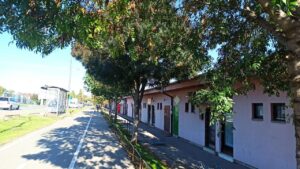Prospects for building «green» residential complexes in Subotica
As urbanization continues to rise globally, the need for sustainable living solutions has never been more pressing. Subotica, a city in northern Serbia, is increasingly recognizing the importance of «green» residential complexes that prioritize environmental sustainability, energy efficiency, and community well-being. This article explores the prospects for building such complexes in Subotica, examining the current landscape, potential benefits, and challenges that lie ahead.
Current Landscape of Residential Development in Subotica
Subotica has a rich architectural heritage and a growing population, which has led to an increase in residential development projects. However, many of these projects have not prioritized sustainability, often relying on traditional construction methods that can be detrimental to the environment. The local government has begun to acknowledge the need for a shift towards greener practices, with discussions around urban planning that incorporates eco-friendly designs and materials.
Recent initiatives have highlighted the importance of integrating green spaces into residential areas, which not only enhance the aesthetic appeal but also contribute to biodiversity and improve air quality. The city has seen some pilot projects that incorporate sustainable building practices, such as the use of renewable energy sources, rainwater harvesting systems, and energy-efficient appliances. These projects serve as a foundation for future developments and demonstrate the feasibility of constructing green residential complexes in Subotica.
Moreover, the growing awareness among residents about climate change and environmental issues has created a demand for sustainable living options. As more people seek homes that align with their values, developers are increasingly motivated to invest in green residential complexes. This shift in consumer preferences presents a significant opportunity for Subotica to position itself as a leader in sustainable urban development.
Benefits of Green Residential Complexes
Building green residential complexes in Subotica offers numerous benefits, both for the environment and the local community. One of the primary advantages is the reduction of the carbon footprint associated with traditional construction methods. By utilizing sustainable materials and energy-efficient technologies, these complexes can significantly lower greenhouse gas emissions, contributing to global efforts to combat climate change.
In addition to environmental benefits, green residential complexes can enhance the quality of life for residents. Features such as green roofs, community gardens, and energy-efficient designs promote healthier living environments. Access to green spaces has been linked to improved mental health, increased physical activity, and a stronger sense of community. As Subotica continues to grow, prioritizing these elements in residential development can lead to a more vibrant and cohesive urban environment.
Furthermore, green residential complexes can provide long-term economic benefits. While the initial investment may be higher, the operational costs associated with energy-efficient buildings are often lower due to reduced utility bills. Additionally, properties that incorporate sustainable features tend to have higher market values and attract environmentally conscious buyers. This economic incentive can drive further investment in green development, creating a positive feedback loop that benefits both the city and its residents.
Challenges to Overcome
Despite the promising prospects for green residential complexes in Subotica, several challenges must be addressed to realize this vision. One significant hurdle is the initial cost of construction. Sustainable building materials and technologies can be more expensive than traditional options, which may deter developers from pursuing green projects. To overcome this barrier, local governments and financial institutions could explore incentives, such as grants or low-interest loans, to support sustainable development initiatives.
Another challenge is the need for skilled labor and expertise in green construction practices. As the demand for sustainable buildings increases, there is a pressing need for training programs that equip local workers with the necessary skills. Collaborations between educational institutions, government agencies, and the construction industry can help bridge this gap, ensuring that Subotica has a workforce capable of meeting the demands of green residential development.
Lastly, public awareness and acceptance of green living practices are crucial for the success of these projects. While there is a growing interest in sustainability, some residents may be hesitant to embrace new concepts or technologies. Community engagement initiatives, such as workshops and informational campaigns, can help educate the public about the benefits of green residential complexes and foster a culture of sustainability within Subotica.
The prospects for building «green» residential complexes in Subotica are promising, driven by a combination of environmental necessity, community demand, and economic opportunity. While challenges remain, proactive measures can be taken to address these issues and pave the way for sustainable urban development. By embracing green building practices, Subotica has the potential to enhance its livability, protect its natural resources, and set a precedent for other cities in the region. As the world moves towards a more sustainable future, Subotica stands at the forefront of this important transition.


